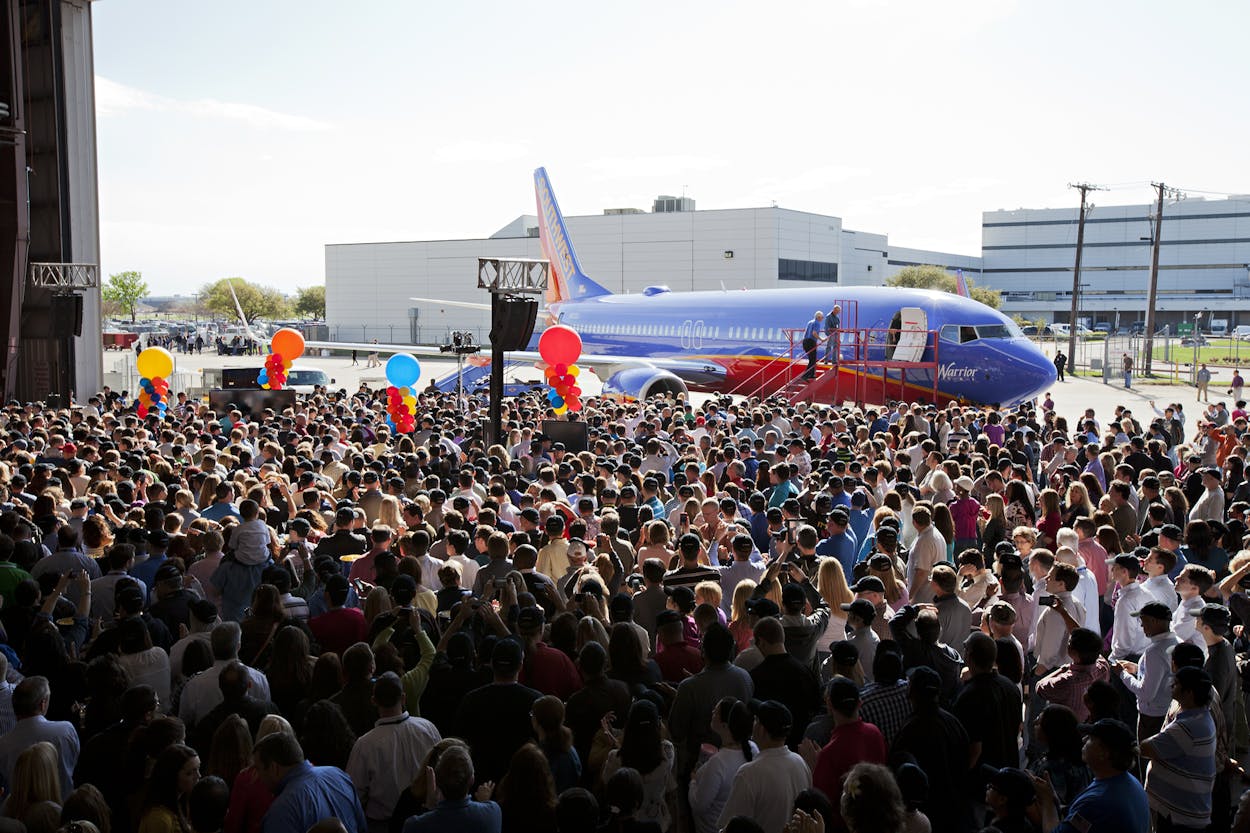In his TEXAS MONTHLY March cover story about Southwest Airlines, S.C. Gwynne noted that Southwest was:
[N]o longer the scrappy short-hop carrier that flew only into quirky airports like Love and Hobby, gave out flimsy pieces of plastic as boarding passes, and often charged half what other airlines did.
On Wednesday, the Dallas-based airline finalized that transformation, unveiling its first new aircraft since 1987 to more than three hundred employees and media at Love Field. The Boeing 737-800 has 175 seats (up from 137) and goes into service April 11.
As David Koenig of the Associated Press wrote:
The 737-800 is Southwest’s first new model since it added the 737-700 in 1997. The bigger plane means Southwest flights will require an additional flight attendant, but executives said that will be offset by more revenue and lower fuel and maintenance costs than with older jets.
Southwest plans to get 33 of the new planes this year, and 41 next year, while retiring a similar number of older jets. Southwest has more than 550 planes, not counting its AirTran Airways subsidiary.
As Terry Maxon of the Dallas Morning News reported (paywall), Southwest has flown nothing but Boeing 737s since its first flight in 1971, and its planes have been no larger than 137 seats since 1984.
“When it became the launch customer for the next generation of 737s in December 1997,” Maxon wrote, “Southwest again chose a 137-seat version, the 737-700.”
The newer, bigger plane is also fancier, as Brian Lusk explained on the company’s own Nuts about Southwest blog:
The Boeing Sky Interior offers a quieter, more comfortable environment for Customers with taller ceilings and more overhead bin space, improved operational security features, and ambient LED reading and ceiling lighting. Besides being more effective, the new interior is energy efficient. Also, our great Flight Attendants can match the lighting to the mood onboard the aircraft—subdued at night or bright and festive for a Las Vegas flight.
The planes’ first routes will be Baltimore to Fort Lauderdale and Chicago-Midway to Fort Myers. But their initial value is to help Southwest serve space-restricted airports where the airline can’t have many flights, like New York-LaGuardia.
Even more importantly, they’ll make it possible for Southwest to serve Hawaii or the Carribbean. As Gwynne wrote in TEXAS MONTHLY, that’s the only way the company can continue growing:
[M]any industry insiders are betting that Southwest’s future lies in international flights, the final frontier for the airline . . .
“They are going to have to find new sources of revenue, and international seems to be the place to do that,” says William Swelbar, an airline analyst at the Massachusetts Institute of Technology. “The U.S. marketplace is full, even for a low-cost carrier like Southwest. It has the range to get to Central America. Obviously Hawaii is on its radar screen. It is really left with no choice but to expand its business outside the forty-eight contiguous states.”
“I never thought in a million years that Southwest would be flying possibly to Hawaii,” flight attendant instructor Kim Townsend, who said she’d teared up at the site of the plane, told Andres Gutierrez of NBCDFW.com.
Watch Southwest’s effusively promotional video about the new aircraft:







